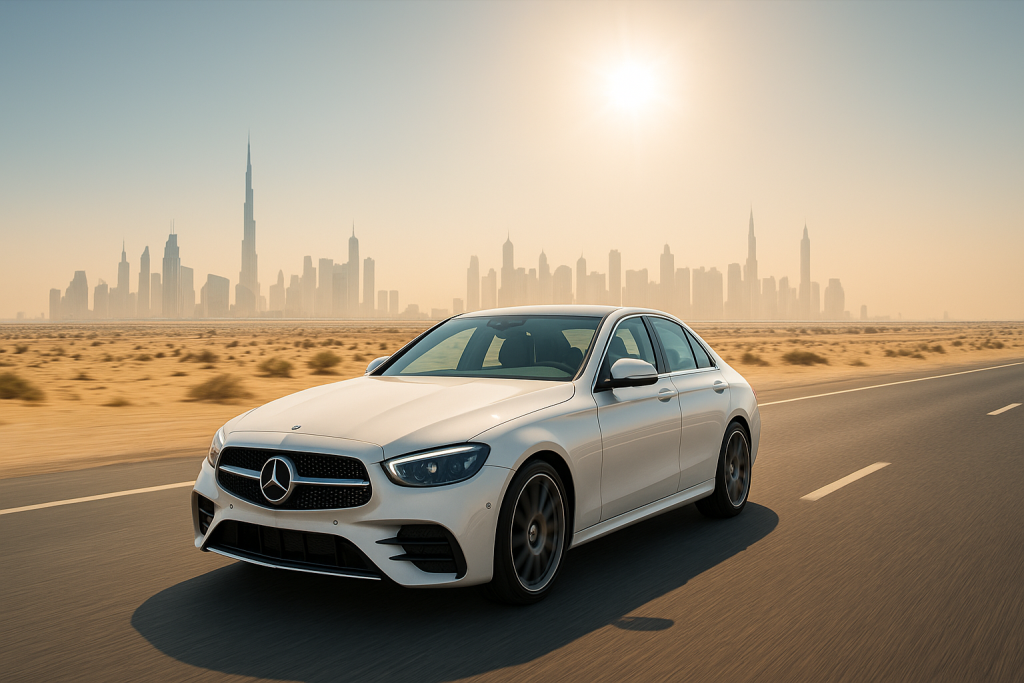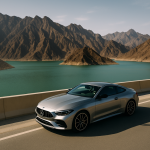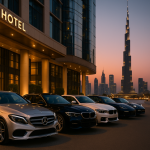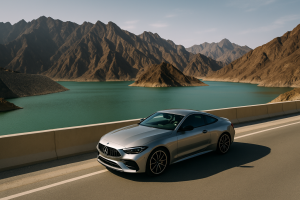The company alligator.rent offers clients in Dubai a wide vehicle fleet – from premium sedans to sports coupes and convertibles from brands such as mercedes-benz, bmw, porsche, and others.
During the summer season, many renters face extreme heat: engine overheating, electronic malfunctions, and decreased cabin comfort.
The purpose of this article is to provide technical recommendations that will help avoid additional expenses related to breakdowns, overheating, or malfunctions.
Operating features
1.1. Thermal load on the engine and cooling system
At a temperature close to 45 °c, the engine experiences additional stress: the intake air temperature rises, and heat removal becomes less efficient, especially if the car has been parked under direct sunlight.
- The radiator fan must operate efficiently; it is desirable that your rental car is equipped with a modern electric fan with a thermal switch that can activate in advance.
- The coolant (antifreeze) must contain additives designed for high temperatures and stability under strong heating.
- Hoses and pipes of the cooling system made of heat-resistant materials (silicone, reinforced rubber) must be in excellent condition.
- While driving on highways or in traffic, monitor the coolant level and pressure (within the manufacturer’s specifications).
- When stopping, it is preferable to turn off the engine at idle, especially during long stops, to reduce the load on the cooling system.
1.2. Air conditioning and passenger protection
Cabin comfort directly affects driver safety: overheating can reduce the driver’s concentration.
- The air conditioner must be properly serviced: check the refrigerant level (usually r-134a or r-1234yf), the cleanliness of the evaporator, and the functionality of the cabin fan.
- The air conditioner should be started smoothly: first use the “ventilation” mode, then gradually lower the temperature to avoid excessive temperature differences, especially after parking in the sun.
- For long parking periods, it is recommended to slightly open the windows (by about 1-2 cm) or use sunshades on the windows to reduce heat buildup.
- Use high-quality sunshades or films (optical light transmission coefficient not less than 35 %) for the windshield and side windows – this can lower the temperature inside by 8-12 °c.
1.3. Protection of the interior and electronics
High cabin temperatures, especially under direct sunlight, have a negative effect: leather and plastic fading, and accelerated aging of electronic components.
- Use light, breathable seat covers if the renter parks the car under the sun.
- Whenever possible, avoid direct sunlight on the front panel: use aluminum-foil reflective covers under the windshield from time to time.
- Do not leave sensitive electronics (for example, smartphones, tablets) on the front panel – their components and batteries may lose performance when heated.
- For convertibles, during long parking, it is advisable to slightly ventilate the hood area on the engine side – this will reduce the under-hood temperature and stabilize the electronics.
1.4. Tires and pressure
The high temperature of asphalt (it can heat up to 70-80 °c under direct sunlight) affects tire condition and safety.
- Tire pressure should be checked when the tires are cold (before driving). The recommended pressure should be within the manufacturer’s limits, but in hot weather, it is advisable to increase it by 0.2-0.3 bar to compensate for thermal expansion.
- Avoid hitting curbs and sharp impacts – the goal is to preserve the carcass and prevent sidewall overheating.
- Use tires with high temperature resistance marked “temperature a / treadwear > 300,” preferably premium-class brands.
- When driving, avoid sharp acceleration or braking, especially on hot asphalt – this reduces thermal stress on the tire.
Rent a sports car in Dubai Now
Practical recommendations for renters
2.1. Optimal time for driving
- Morning (5:30-8:30) and evening (17:30-19:30) are the most favorable periods for driving when the temperature has not yet reached its peak values.
- Avoid driving between 12:00 and 16:30, when the load on the vehicle and its systems is at its maximum.
- If driving during hot hours is necessary, plan routes with minimal time in traffic jams and choose shaded alternatives whenever possible.
2.2. Parking
- Whenever possible, park in the shade, under canopies, or in covered parking areas.
- Do not leave the car under direct sunlight for long periods – this minimizes the thermal load on the engine and cabin.
- Keep the steering wheel in a straight position (sometimes it helps slow brake overheating), especially in open parking lots.
- For short stops (for example, refueling), turn off the engine immediately so that the cooling system works more efficiently.
2.3. Monitoring parameters while driving
- Regularly monitor engine temperature and dashboard indicators – if the gauge rises above normal (usually about 95-105 °c), take measures: reduce load, stop, and check coolant level.
- If unusual noise, vibration, or a smell of hot material appears – stop immediately, assess the situation, and do not continue driving without inspection.
- Do not drive with a damaged air filter – reduced air supply to the engine will only worsen overheating.
- Whenever possible, plan short stops every 60-90 minutes for ventilation, especially during highway trips.
2.4. Preparation before rental
- When receiving the vehicle, visually check the condition of hoses, pipes, coolant level, and radiator cleanliness.
- Ask about the maintenance history from the rental company (when the coolant was last changed, whether engine-bay components were inspected).
- Clarify whether the rental agreement includes insurance covering heat-related failures or protects the renter from overheating-related costs.
- Take photos of the car’s body, glass, and tires before departure – this is important in case of disputes.
Experience Dubai in a vintage convertible — elegance on every mile!
Possible problems and ways to minimize them
3.1. Engine overheating
Causes: insufficient heat exchange, fan malfunction, low coolant level, dirty radiator.
Actions:
- Stop immediately, let the engine idle with the hood open.
- Check the coolant level (do not open the expansion tank cap until cooled).
- If spare coolant is available, add the appropriate type according to the manufacturer’s standard.
- Call the rental company’s technical support if necessary.
3.2. Air conditioner failure
Causes: refrigerant leak, compressor malfunction, system blockage.
Actions:
- Reduce load: if the air conditioner does not work, try to drive into the shade and ventilate the cabin.
- Notify the rental company – the technical team must inspect and, if necessary, replace the component.
- If possible, use air recirculation mode – this reduces the inflow of hot external air.
3.3. Electronic malfunctions
High temperature can cause instability of touch panels, displays, or the engine control unit.
Actions:
- Do not leave touchscreens under direct sunlight during parking.
- Avoid driving immediately after long parking; allow electronics to cool down.
- If possible, keep the engine idling with minimal load during the first minutes of movement.
Cost of mistakes and importance of prevention
With improper operation, the risk of damage to the engine, cooling system, or electronic components increases significantly. Under rental terms, such repairs (for example, replacement of the pump, radiator, or control unit) may be charged to the renter.
The cost of replacing an air conditioner, repairing the interior, or fixing tire or engine damage often greatly exceeds the rental price for several days.
Summary of practical advice
Cooling system check level, maintain tightness, monitor fan operation
Air conditioning smooth start, correct mode, protect windows from sunlight
Interior and electronics avoid direct sunlight, do not leave electronics on the dashboard
Tires monitor pressure, use heat-resistant models, drive carefully
Driving time morning and evening – optimal hours; avoid hot midday periods
Insurance and agreement clarify responsibility for overheating and breakdowns, complete photo documentation
The company alligator.rent strives to provide clients with reliable, technically sound luxury vehicles adapted to Dubai’s hot climate.
By following the recommendations presented above, the likelihood of malfunction is significantly reduced, and the rental process becomes as safe and convenient as possible for both parties.








